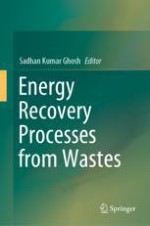2020 | OriginalPaper | Buchkapitel
Catalytic and Non-catalytic Thermolysis of Waste Polystyrene for Recovery of Fuel Grade Products and Their Characterization
verfasst von : Rohit Kumar Singh, Biswajit Ruj, Anup Kumar Sadhukhan, Parthapratim Gupta
Erschienen in: Energy Recovery Processes from Wastes
Verlag: Springer Singapore
Aktivieren Sie unsere intelligente Suche, um passende Fachinhalte oder Patente zu finden.
Wählen Sie Textabschnitte aus um mit Künstlicher Intelligenz passenden Patente zu finden. powered by
Markieren Sie Textabschnitte, um KI-gestützt weitere passende Inhalte zu finden. powered by
